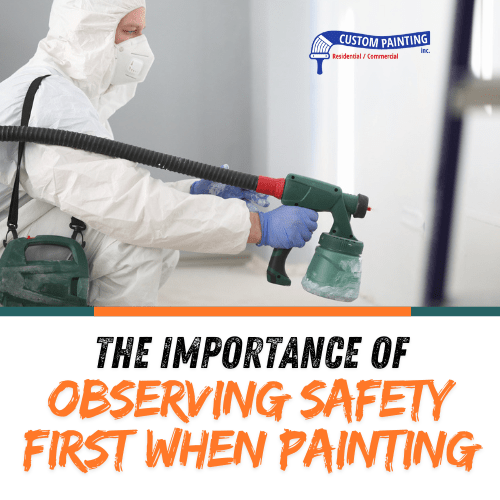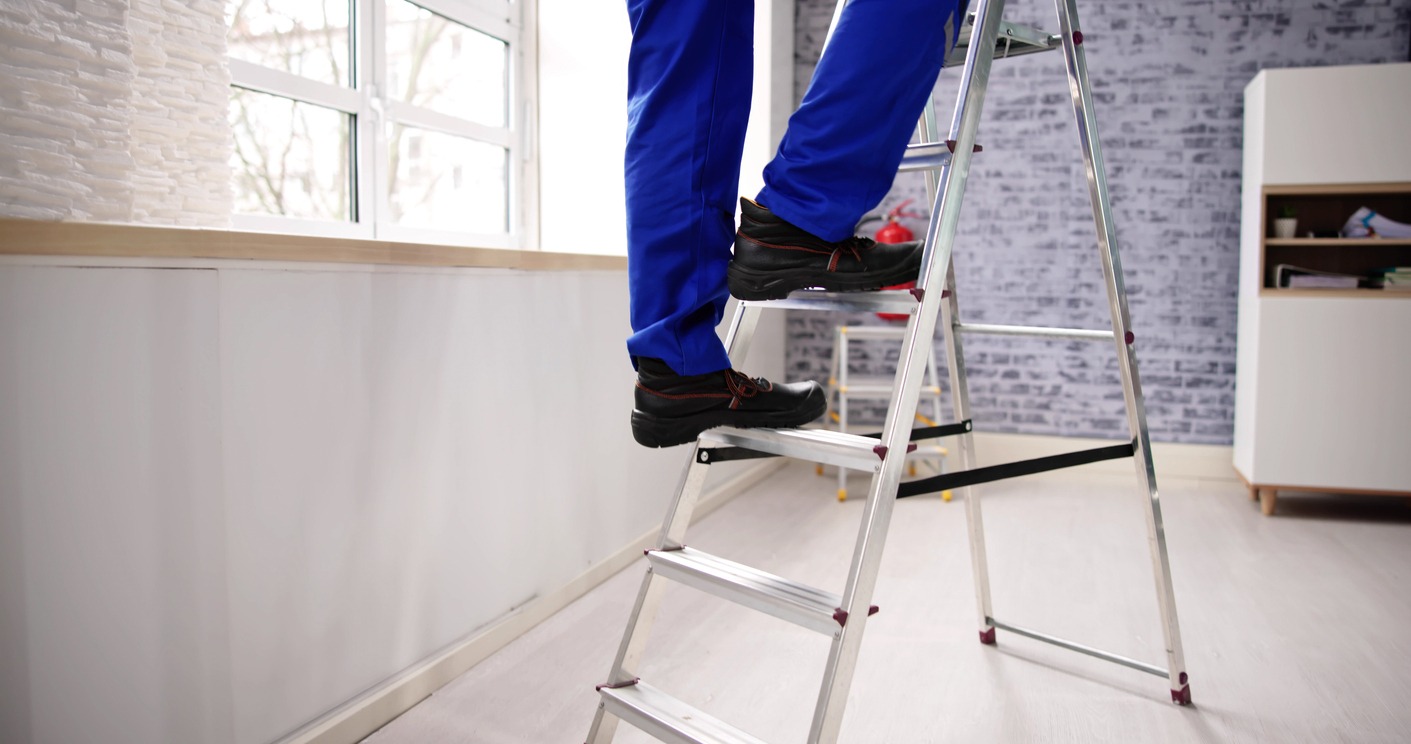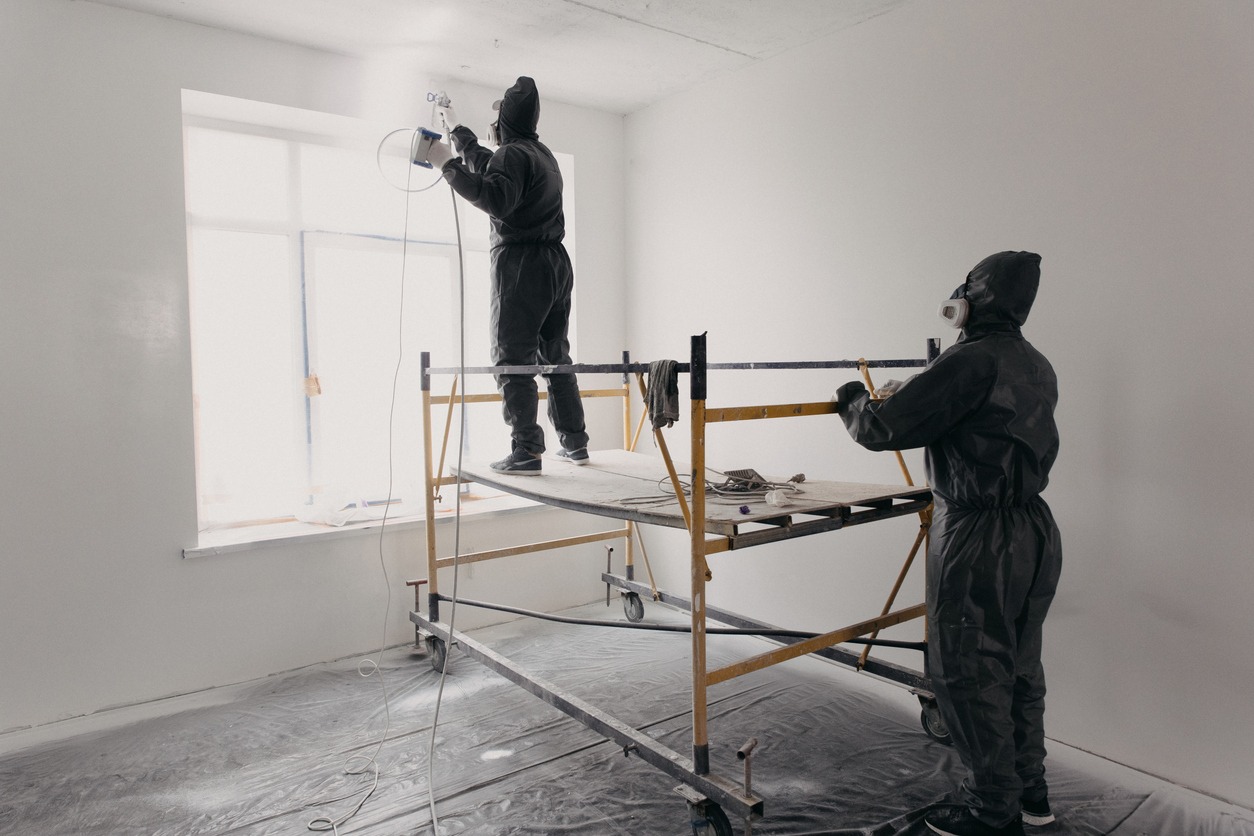Whether you’re an enthusiastic DIY house painter or a qualified professional painter, you know that safety is first above everything else, right? Safety should be a top priority in everything we do, but this applies most appropriately when painting a home or another building.
House painting in San Ramon or any other city can involve health risks, accidents, and injuries. They may include falling, slipping, and inhaling dust while sanding or inhaling noxious paints.
Implement safety measures before, during, and after painting to prevent accidents. They’re not that difficult to follow. Besides, a little effort and observance will go a long way to ensure that no one gets hurt during the paint job.
Interior house painting safety measures and precautions
When painting the interior of a house, safety measures are crucial to protect everyone’s health and ensure a successful project. Here are detailed safety guidelines to follow:
Personal protective equipment (PPE)
- Respirators and masks: Use a respirator or mask to avoid inhaling fumes, especially when using solvent-based paints.
- Gloves: Wear latex or nitrile gloves to protect your skin from paint and solvents.
- Safety glasses or goggles: Protect your eyes from splashes and dust.
- Protective clothing: Wear old clothes or a disposable coverall to avoid staining your regular house clothes. Long sleeves can also protect your skin.
Ventilation
- Open windows and doors: Keep windows and doors open to ensure good ventilation. Use fans to help circulate fresh air.
- Ventilation equipment: Consider using exhaust fans to expel fumes from the work area.
Preparation
- Move furniture and cover floors: Move furniture out of the room or cover it with drop cloths or plastic sheets. Cover floors with drop cloths to protect from spills.
- Tape off areas: Use painter’s tape to mask off areas you do not want to paint.
- Clean surfaces: Clean walls and surfaces to remove dust, dirt, and grease for better paint adhesion.
Handling paints and solvents
- Read labels: Always read and follow the safety instructions on paint cans and solvent containers.
- Storage: Store paints and solvents in a cool, dry place away from heat sources and out of reach of children and pets.
- Disposal: Dispose of paint and solvents according to local hazardous waste regulations. Do not pour them down the drain.
Electrical safety
- Turn off the electricity: If you need to remove outlet covers or light fixtures, turn off the room’s electricity.
- Use proper lighting: Install adequate lighting to avoid accidents and ensure even paint coverage.
Ladder safety
- Stable surface: Place the ladder on a stable, level surface.
- Three points of contact: Maintain three points of contact (two feet and one hand) when climbing.
- Correct height: Use a ladder of the proper height to avoid overreaching.
Fire safety
- No open flames: Keep open flames, sparks, and smoking materials away from the painting area.
- Fire extinguisher: Keep a fire extinguisher nearby, especially when using solvent-based paints.
General safety tips
- Take breaks: Take regular breaks to avoid fatigue.
- Stay hydrated: Drink plenty of water to hydrate yourself, especially in warm conditions.
- First aid kit: Have a first aid kit accessible in case of minor injuries.
Children and pets
- Keep away: Keep children and pets out of the painting area to avoid accidents and exposure to harmful substances.
Following these safety measures ensures a safer and more pleasant painting experience while protecting your health and the well-being of others in the household.
Exterior house painting safety measures and precautions
Safety should also be a top priority in exterior house painting. Here are the crucial safety measures to follow:
Personal Protective Equipment (PPE)
- Respiratory protection: Use masks or respirators to avoid inhaling paint fumes, especially when using solvent-based paints or working in poorly ventilated areas.
- Eye protection: Wear safety goggles to protect your eyes from paint splashes, dust, and debris.
- Gloves: Use durable gloves to protect your hands from chemicals and sharp objects.
- Clothing: Wear long-sleeved shirts, long pants, and a hat to protect your skin from paint and sun exposure.
Ladder safety
- Inspection: Check ladders for any damage or defects before use. Ensure all rungs and side rails are intact and secure.
- Stability: Place the ladder on a firm, level surface. If necessary, use a ladder stabilizer or leg levelers.
- Angle: Position the ladder at the correct angle (a 4:1 height ratio to base distance).
- Three points of contact: Maintain three points of contact (two hands and one foot, or two feet and one hand) when climbing or descending.
- Height: Never stand on the top rungs of a ladder. Follow the manufacturer’s guidelines on maximum safe height.
Scaffolding safety
- Erection: Ensure scaffolding is erected on a stable and level surface. Follow the manufacturer’s instructions for assembly.
- Guardrails: Use guardrails, midrails, and toe boards to prevent falls.
- Access: Provide safe access to the scaffold platform via ladders or stair towers.
- Load limits: Do not exceed the maximum load capacity of the scaffold.
Electrical safety
- Power lines: Maintain a safe distance from power lines. Use fiberglass or wood ladders near electrical sources instead of metal ones.
- Extension cords: Use outdoor-rated extension cords and keep them away from wet areas.
Weather conditions
- Wind: Avoid painting on windy days to prevent losing balance and control of materials.
- Rain: Do not paint when it rains or rain is expected, as it can affect paint adhesion and drying.
Surface preparation
- Lead paint: Test for lead paint in older homes. If lead is present, follow EPA guidelines for safe removal or containment.
- Cleaning: Use appropriate cleaning solutions and tools to prepare the surface. Wear PPE to protect yourself from chemicals and debris.
Paint handling
- Ventilation: Ensure proper ventilation when using solvent-based paints or working in confined spaces.
- Storage: Store paints and solvents in a cool, dry place away from open flames and direct sunlight.
Ergonomics and technique
- Lifting: Use proper lifting techniques to avoid back injuries. Lift with your legs, not your back.
- Breaks: Don’t forget to take regular breaks to prevent fatigue and stay focused.
- Hydration: Stay hydrated, especially in hot weather.
First aid and emergency preparedness
- First aid kit: Keep a well-stocked first aid kit on-site.
- Emergency plan: Have an emergency plan, including contact information for local medical services.
Following these safety measures ensures a safe and successful exterior painting project.
Conclusion
Carelessness and negligence while painting can lead to accidents and injuries. This is why following these house painting safety measures is crucial. Following these safety protocols means no worries about accidents, and no worries mean you’ll be able to produce a good paint finish.
Hire Custom Painting, Inc. to paint your home safely!
Custom Painting, Inc.’s licensed and insured paint crew is trained to handle paints, tools, and materials safely. They also follow safety protocols to ensure the safety of everyone involved in the project and your property. Working with us will ensure you a top-quality paint finish, help you save time and effort, and provide you with peace of mind knowing we will do the job right.
Do you want to learn more about house painting safety or discuss the details of your upcoming painting project with our team? Contact Custom Painting, Inc. by phone at 925-294-8062 or through our online contact form. We’ll be happy to answer your questions about our services.



